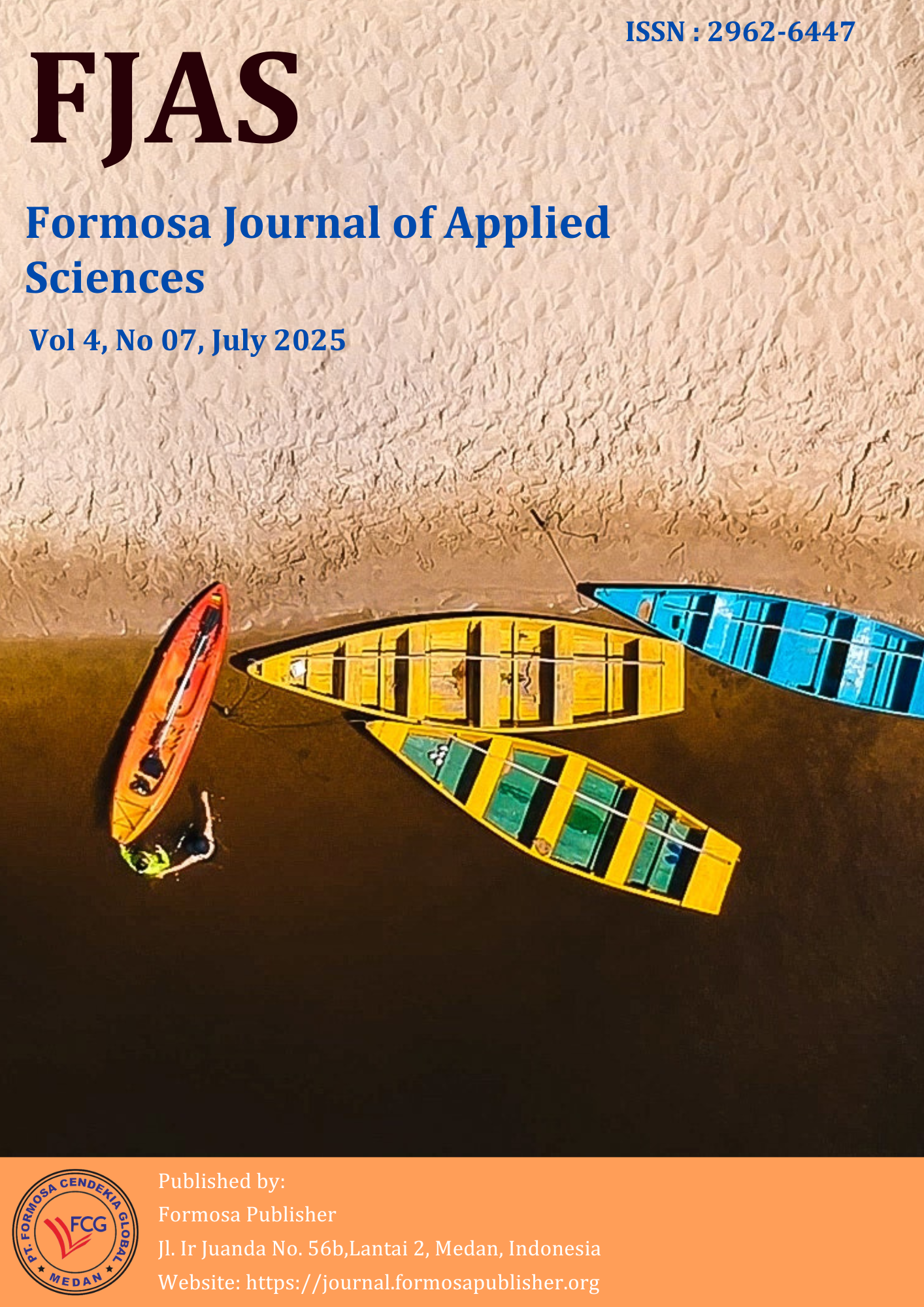Development of a Smart Radiation Monitoring System for Occupational Safety in Healthcare Facilities
DOI:
https://doi.org/10.55927/fjas.v4i7.218Keywords:
Smart Radiation Monitoring, IoT System, Healthcare Facilities, Real-Time Radiation Detection, Radiation Safety ProtocolsAbstract
This paper will propose a smart radiation monitoring system that could help improve healthcare occupational safety by decreasing ionizing radiation. The system combines Geiger-Muller and semiconductor sensors with wireless communication protocols, such as Wi-Fi and the LoRaWAN interface, to monitor them in real time. The system offers immediate feedback through cloud-based dashboards and runs automatic alerts on exposure limits via IoT-based technologies. Stationary and wearable sensors positioned across several hospital departments had their real-time data processed and analyzed by machine learning schemes to identify abnormalities and predict exposure risks. In a pilot study, a 32.5% decline in worker exposure was observed after 30 days, reflecting the benefit of the system in enhancing radiation safety and compliance with international requirements regarding radiation protection.
References
Abimanyu, A., Akmalia, R., & Salam, M. (2020). Design of IoT-based radiation monitor area for nuclear and radiological emergency preparedness system in Yogyakarta nuclear area. Journal of Physics: Conference Series, 1428(1), 012050. https://doi.org/10.1088/1742-6596/1428/1/012050.
Ahmadinejad, P., Fazli, Z., Sadeghi, M., & Vali, M. (2025). The role of artificial intelligence in occupational health in radiation exposure: A scoping review of the literature. Environmental Health, 24(32). https://doi.org/10.1186/s12940-025-01186-3.
Ahmadinejad, P., Fazli, Z., Sadeghi, M., & Vali, M. (2025). The role of artificial intelligence in occupational health in radiation exposure: A scoping review of the literature. Environmental Health, 24(32). https://doi.org/10.1186/s12940-025-01186-3.
Alagha, A., Singh, S., Mizouni, R., Ouali, A., & Otrok, H. (2019). Data-driven dynamic active node selection for event localization in IoT applications—A case study of radiation localization. IEEE Access, 7, 16168–16183. https://doi.org/10.1109/ACCESS.2019.2894212.
Chen, M., Ma, Y., Li, Y., Wu, D., Zhang, Y., & Youn, C. H. (2017). Wearable 2.0: Enabling human-cloud integration in next generation healthcare systems. IEEE Communications Magazine, 55(1), 54–61. https://doi.org/10.1109/MCOM.2017.1600363CM.
Dubey, H., Monteiro, A., Constant, N., Abtahi, M., Borthakur, D., Mahler, L., Sun, Y., Yang, Q., Akbar, U., & Mankodiya, K. (2017). Fog computing in medical Internet-of-Things: Architecture, implementation, and applications. arXiv preprint arXiv:1706.08012. https://arxiv.org/abs/1706.08012.
Dubey, H., Monteiro, A., Constant, N., Abtahi, M., Borthakur, D., Mahler, L., Sun, Y., Yang, Q., Akbar, U., & Mankodiya, K. (2017). Fog computing in medical Internet-of-Things: Architecture, implementation, and applications. arXiv preprint arXiv:1706.08012. https://arxiv.org/abs/1706.08012.
Goyal, J., & Khandelwal, A. (2020). Long range nuclear radiation monitoring system using LPWAN technology. In 2020 IEEE Sensors Applications Symposium (SAS) (pp. 1–5). IEEE. https://doi.org/10.1109/SAS48726.2020.9220036.
Goyal, J., & Khandelwal, A. (2020). Long range nuclear radiation monitoring system using LPWAN technology. In 2020 IEEE Sensors Applications Symposium (SAS) (pp. 1–5). IEEE. https://doi.org/10.1109/SAS48726.2020.9220036.
Guo, Y., Mao, L., Zhang, G., Chen, Z., Pei, X., & Xu, X. G. (2020). Conceptual design and preliminary results of a VR-based radiation safety training system for interventional radiologists. arXiv preprint arXiv:2001.04839. https://arxiv.org/abs/2001.04839.
International Atomic Energy Agency (IAEA). (2014). Radiation protection and safety of radiation sources: International basic safety standards. IAEA Safety Standards Series No. GSR Part 3.
Kumar, N., & Lee, J. H. (2019). Security issues in healthcare applications using wireless medical sensor networks: A survey. Sensors, 12(1), 55–91. https://doi.org/10.3390/s120100055.
Leng, J., Yan, X., & Lin, Z. (2022). Design of an Internet of Things system for smart hospitals. arXiv preprint arXiv:2203.12787. https://arxiv.org/abs/2203.12787.
Mahatab, T. A., Muradi, M. H., Ahmed, S., & Kafi, A. (2018). Design and analysis of IoT based ionizing radiation monitoring system. In 2018 International Conference on Innovations in Science, Engineering and Technology (pp. 432–436). https://doi.org/10.1109/ICISET.2018.8745612.
Mahatab, T. A., Muradi, M. H., Ahmed, S., & Kafi, A. (2018). Design and analysis of IoT based ionizing radiation monitoring system. In 2018 International Conference on Innovations in Science, Engineering and Technology (pp. 432–436). https://doi.org/10.1109/ICISET.2018.8745612.
McCaffrey, J. P., Shen, H., Downton, B., & Mainegra-Hing, E. (2018). Radiation shielding considerations for interventional radiology suites. Medical Physics, 45(1), 1–10. https://doi.org/10.1002/mp.12665.
Rehani, M. M., Vano, E., Ciraj-Bjelac, O., & Kleiman, N. J. (2018). Radiation and cataract. Radiation Protection Dosimetry, 180(1–4), 1–5. https://doi.org/10.1093/rpd/ncy034.
Wakeford, R. (2009). The risk of childhood leukaemia following exposure to ionising radiation—A review. Journal of Radiological Protection, 29(2), A1–A25. https://doi.org/10.1088/0952-4746/29/2A/S01.
Zhang, Y., Wang, Y., & Wang, J. (2020). A review of IoT applications in healthcare. Neurocomputing, 437, 285–298. https://doi.org/10.1016/j.neucom.2020.06.081.
Downloads
Published
Issue
Section
License
Copyright (c) 2025 Kimberly Long Holt

This work is licensed under a Creative Commons Attribution 4.0 International License.


























